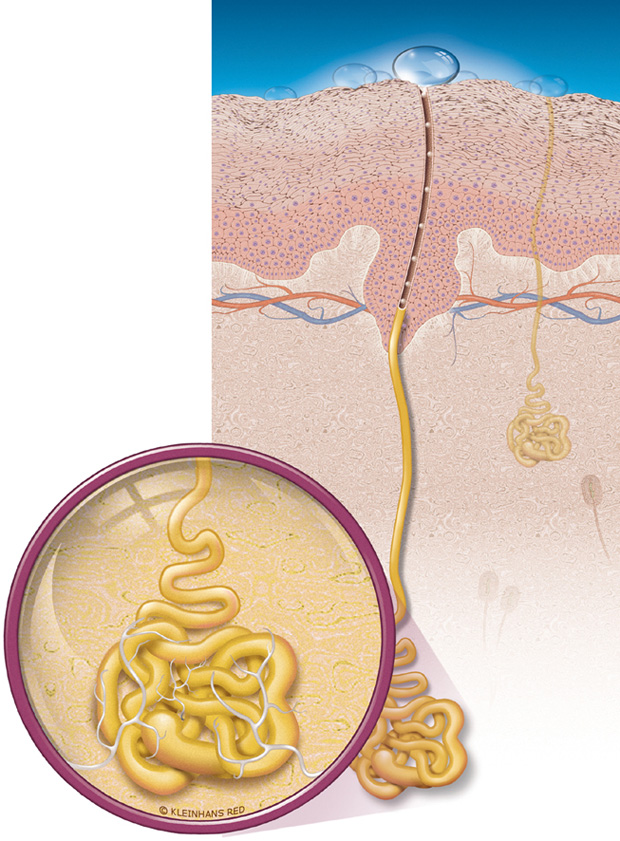Sweat Glands
Human skin contains two types of sweat glands, eccrine (merocrine) and apocrine sweat glands. In man, eccrine (merocrine) sweat glands are the common type. They have a tubular shape and are distributed all over the body except in a very few sites. Approximately 2-3 million sweat glands are in the skin of man. Thick skin has particularly numerous sweat glands. About 3,000 sweat glands per square inch are found in the palm of the hand.
Each gland consists of a secretory part and an excretory duct. The secretory part is located immediately below the dermis in the subcutaneous tissue. It is coiled in itself. The secretory portion of the gland changes into a duct which passes toward the surface. The duct follows a spiral course through the dermis.
An adult produces approximately 100 ml sweat within 24 hours if he is not exposed to heat and physical exercise. During strenuous work or heat exposure, sweat production may rise to over 10 liters per day. On average, the skin produces 500 ml of water per day.
The most important physiological function of eccrine sweat production is cooling. Through the transpiration of water on the skin surface, thermal energy is withdrawn from the skin so that the body temperature does not rise to over 37° C (98.6° F).
References
- Ham, A.A.; Histology, J.B. Lippincott Company, Philadelphia/Toronto (1974)
- Heymann, E.; Haut, Haar und Kosmetik: Eine chemische Wechselwirkung; S. Hirzel Verlag, Stuttgart 1994

